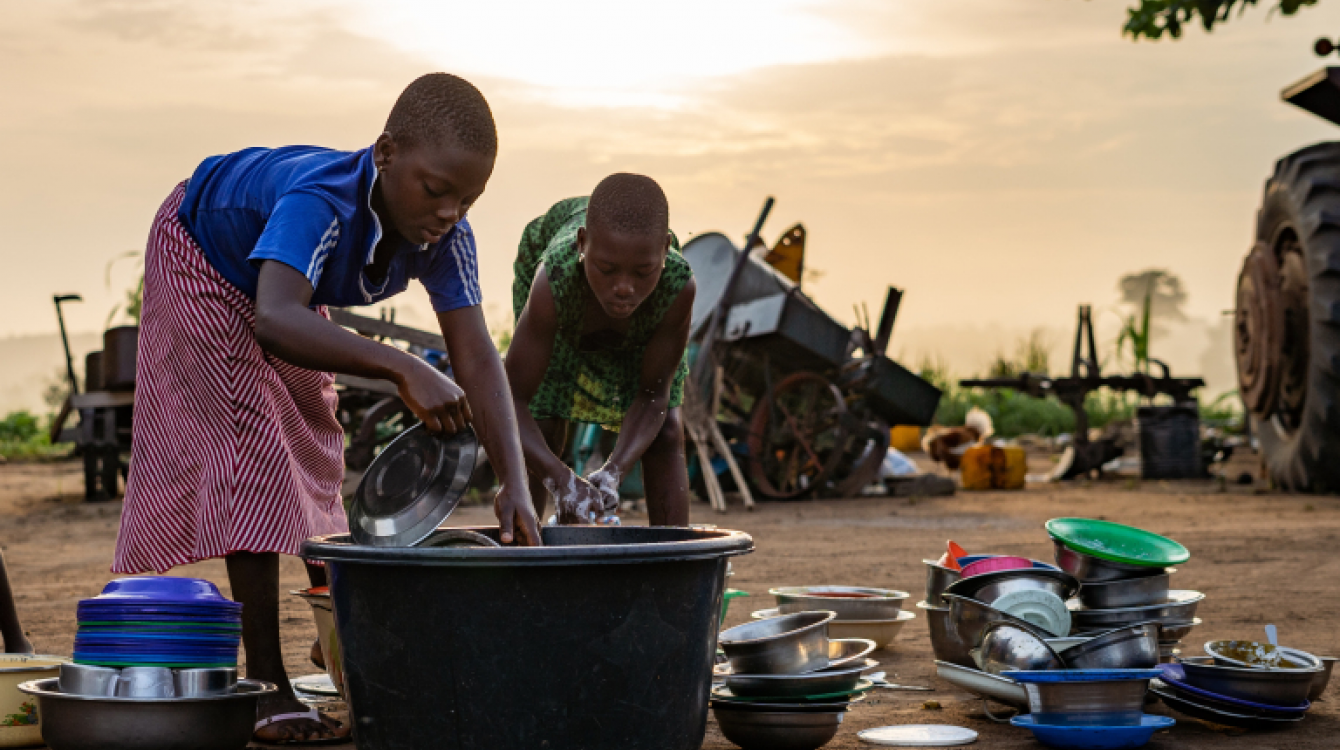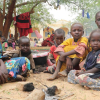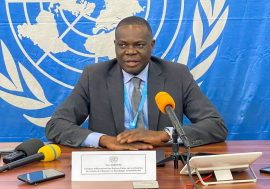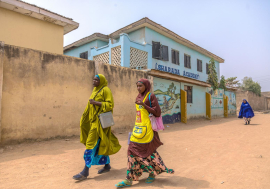This blog is part of a series on tackling COVID-19 in developing countries. Visit the OECD dedicated page to access the OECD’s data, analysis and recommendations on the health, economic, financial and societal impacts of COVID-19 worldwide.
This blog is also a part of a thread looking more specifically at the impacts and responses to the COVID-19 crisis in Least Developed Countries (LDCs).
The novel coronavirus pandemic has rapidly thrown the world into uncharted territory. As COVID-19 diagnoses rise globally, the World Health Organization has reported more than 7,000 cases in the world’s 47 least developed countries (LDCs). While these numbers seem small compared with the thousands of cases being reported daily across hotspots like Spain, the United States, and Italy, chances are that this low number of diagnosed cases will not last for long. Of the 41 LDCs reporting cases, 33 countries have now confirmed local transmission. Bangladesh has surpassed 2400 cases, while Afghanistan and Djibouti have reported more than 800 COVID-19 infections. With limited testing available in the LDCs due to already fragile health systems and limited access, especially in rural areas, these numbers are likely to be even higher and will continue to rise.
The 1.1 billion people living in LDCs, with an average real GDP per capita of US$922, equivalent to a mere 9% of the world’s average, are the least prepared and most vulnerable to face an eventual domestic pandemic. These countries should start making serious plans to contain an eventual contagion and the international community must stand ready to provide adequate assistance to them.
As the World Health Organization has cautioned, with the COVID-19 pandemic expanding at an exponential rate, the international community must not forget the world’s poorest. While leaders in developed countries are taking action to deliver broad stimulus packages and protective measures to shield their people and economies from the impacts of the pandemic, this same spirit of cooperation must be extended to the LDCs.
On 26 March, King Salman Bin Abdul Aziz of Saudi Arabia convened an Extraordinary Virtual G20 Summit on COVID-19, where developed country leaders agreed to “fight, unite, and ignite together against COVID-19”.
United Nations Secretary-General António Guterres has outlined four major considerations for the global community to take action with shared responsibility and global solidarity. In similar calls, UNCTAD, the International Monetary Fund and others have echoed the need for support to developing countries, with a focus on the plight of LDCs.
Innovative solutions are urgently needed in the LDCs
While developing countries are bracing for major falls in foreign direct investment and trade, as well as rising unemployment, the international community must not forget that commerce and labor markets in the LDCs will also be impacted.
According to recent UNCTAD estimates, global foreign direct investment could fall by as much as 40% in 2020-21. The main trade partners of the LDCs, including the European Union, the United States and China have been the most affected by the current outbreak, and this will have knock-on effects on their local economies.
The added challenges posed by the informal nature of economies of many LDCs also means they can’t simply import other countries’ models for fighting the coronavirus. Social distancing has quickly become the new buzz word, as individuals are asked to stay home and avoid all non-essential contact with others. For many of the world’s most vulnerable, this is simply not possible. Shared, multi-generational family living spaces, lack of adequate water and sanitation facilities and access to reliable energy resources are some of the additional burdens facing the LDCs. This ups the risk factor not only for transmission but also for the economic potential for workers to telecommute, work from home and carry on with income-generating activities.
Social safety nets are also less deep and do not exist for many in the LDCs. Informality is a pervasive condition of employment, meaning many people do not have positions to go back to once work from home restrictions are lifted, or unemployment insurance schemes in place to cover for lost earnings. Furthermore, their limited government finances will not allow them to replicate the schemes put forward by Italy or Spain in support of their economies’ black markets.
Support to the Missing Middle
According to the International Labour Organization, the pandemic expected to wipe out 6.7% of working hours globally in the second quarter of 2020 – equivalent to 195 million full-time workers. Employment losses in the LDCs will be serious. In Bangladesh, one of the largest LDC in population and production terms, a significant share of the labor force is employed in a highly globalized manufacturing sector. With shocks to global demand forcing the cancellation of billions of dollars’ worth of retail goods, garment factory workers will be some of the hardest hit. For small-scale entrepreneurs, and own account workers, the pandemic makes the issue of building productive capacities to address “survival entrepreneurship” in LDCs more urgent.
UNCTAD’s research called for support to the missing middle in LDCs. The original analysis shows that the balance of firms in LDCs, even among formal enterprises is heavily skewed towards smaller establishments. Firms with five to 10 employees account for some 35% of all formal firms, but this share drops sharply as firm size increases. The proportion of medium-sized firms, with 20 to 99 employees, is low, highlighting the “missing middle” and dualistic structure of businesses in LDCs. The enterprise structure is characterized by a few large players (often multinational firms), alongside a multitude of small firms and suppliers.
Governments would be well placed to boost employment and production to support medium-sized national industries. As UNCTAD’s recent analysis has shown, these are the dynamic firms with solid growth potential to generate jobs and boost value addition in national products. They also tend to have stronger production linkages with the national economy and serve as key nodes in regional value chains (or can help support their formation).
Moreover, UNCTAD has confirmed empirically the significant and positive relationship between firm size and improved labour productivity in the LDCs. To emerge stronger from the COVID-19 crisis, governments would be well placed to support medium-sized firms and foster deeper production linkages among a more balanced array of firms.
The international community must step up
The international community must start to prepare on two fronts. The immediate challenge will be to ensure that the health and well-being of people in the LDCs is preserved. And that enough necessary life-saving medical supplies and equipment are available to help those who will eventually fall ill. The long-term challenge is to prepare the LDCs for sustainable economic recovery. This is where official development assistance (ODA) can really step in.
UNCTAD has sounded the alarm that developing nations need an additional $2.5 trillion on top of recently announced stimulus measures to fight the economic blow from the coronavirus. And LDCs are in most need of support. Past ODA going to LDCs shows some worrying trends that require urgent correction. Real ODA disbursements to LDCs have increased over time, although at a rate that is short of the internationally agreed commitments to devote between 0.15% and 0.2% of developed countries’ ODA/gross national income to activities in LDCs.
The fall in concessionality associated with this trend is particularly troublesome. While in 2008, 90% of total disbursements were issued in the form of grants, by 2018, that share had decreased to 72%, while the correspondent share of loans has almost doubled. This pattern is visible in both bilateral and multilateral aid. A similar progression can be found in the share of real ODA disbursements allocated in support of the domestic health sector in LDCs, which receives only 84% of the disbursements as grants.
The COVID-19 outbreak comes against a background of a systematic build-up of financial and debt vulnerabilities in many developing countries over the past decade.
With 18 of the 47 UN-defined poorest countries in debt distress or in a high-risk of debt distress, this worsening of ODA concessionality is not only raising concerns about the LDCs’ overall capacity to withstand an eventual contagion, but also worsening the overall debt-sustainability outlook for these countries.
Heavily dependent on ODA, LDCs urgently need immediate health-related ODA at better concessional terms to enable them to successfully manage the impact of the COVID-19 outbreak.
Prevention has always been better than cure. The international community has a choice to make. Urgent action is needed to enable LDCs to build their much-needed productive capacities that would enable the world’s poorest to weather the current and future health and economic shocks.













